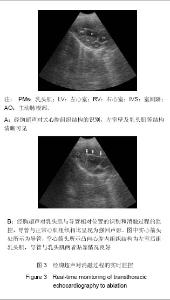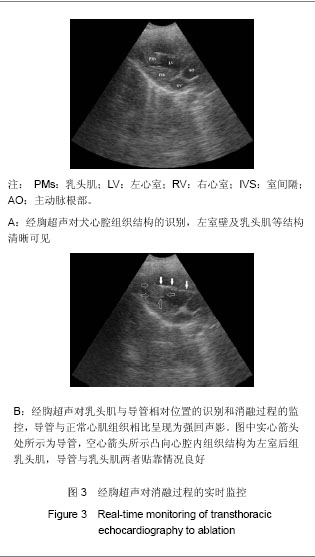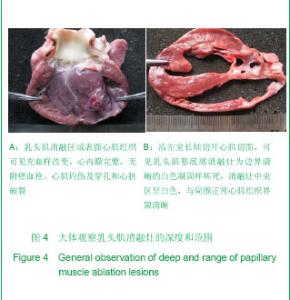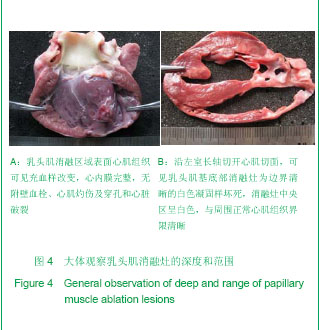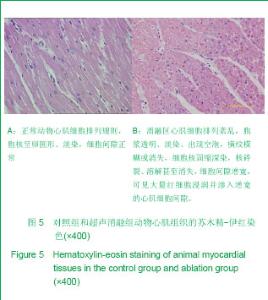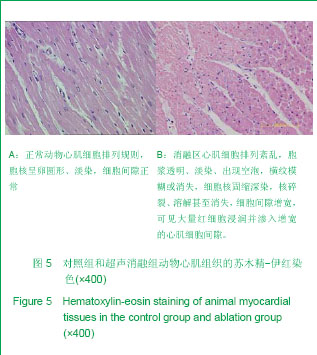| [1] Doppalapudi H, Yamada T, McElderry HT,et al.Ventricular tachycardia originating from the posterior papillary muscle in the left ventricle: a distinct clinical syndrome.Circ Arrhythm Electrophysiol. 2008;1(1):23-29.http://www.ncbi.nlm.nih.gov/pubmed/?term=Ventricular+tachycardia+originating+from+the+posterior+papillary+muscle+in+the+left+ventricle%3A+a+distinct+clinical+syndrome.[2] Pak HN, Kim YH, Lim HE,et al. Role of the posterior papillary muscle and purkinje potentials in the mechanism of ventricular fibrillation in open chest dogs and Swine: effects of catheter ablation.J Cardiovasc Electrophysiol. 2006;17(7):777-783.http://www.ncbi.nlm.nih.gov/pubmed/?term=Role+of+the+posterior+papillary+muscle+and+purkinje+potentials+in+the+mechanism+of+ventricular+fibrillation+in+open+chest+dogs+and+Swine%3A+effects+of+catheter+ablation[3] Yamada T, McElderry HT, Doppalapudi H,et al.Ventricular far-field activity may provide a diagnostic challenge in identifying an origin of ventricular tachycardia arising from the left ventricular papillary muscle.Europace. 2009;11(10):1403-1405.http://www.ncbi.nlm.nih.gov/pubmed/?term=Ventricular+far-field+activity+may+provide+a+diagnostic+challenge+in+identifying+an+origin+of+ventricular+tachycardia+arising+from+the+left+ventricular+papillary+muscle.[4] He DS, Zimmer JE, Hynynen K,et al.Application of ultrasound energy for intracardiac ablation of arrhythmias. Eur Heart J. 1995;16(7):961-966.http://www.ncbi.nlm.nih.gov/pubmed/7498212[5] Huang J,Dong J,Li ZG,et al. Zhonghua Xinlv Shichangxue Zazhi. 2000;4(2):132-135.黄晶,董军,李增高,等.活体超声心肌消融的生物学效应[J].中华心律失常学杂志,2000,4(2):132.http://so.med.wanfangdata.com.cn/ViewHTML/PeriodicalPaper_zhxlscxzz200002017.aspx[6] Festing S. Animal experimentation: the need for deliberation and challenge. Altern Lab Anim. 2008;36(1):1-4.http://www.ncbi.nlm.nih.gov/pubmed/?term=Animal+experimentation%3A+the+need+for+deliberation+and+challenge[7] Nath S, Haines DE. Biophysics and pathology of catheter energy delivery systems. Prog Cardiovasc Dis. 1995;37(4):185-204.http://www.ncbi.nlm.nih.gov/pubmed/?term=Biophysics+and+pathology+of+catheter+energy+delivery+systems[8] Yamada T, McElderry HT, Okada T,et al. Idiopathic focal ventricular arrhythmias originating from the anterior papillary muscle in the left ventricle. J Cardiovasc Electrophysiol. 2009;20(8):866-872.http://www.ncbi.nlm.nih.gov/pubmed/?term=Idiopathic+focal+ventricular+arrhythmias+originating+from+the+anterior+papillary+muscle+in+the+left+ventricle[9] Bogun F, Desjardins B, Crawford T,et al. Post-infarction ventricular arrhythmias originating in papillary muscles. J Am Coll Cardiol. 2008;51(18):1794-1802.http://www.ncbi.nlm.nih.gov/pubmed/?term=Post-infarction+ventricular+arrhythmias+originating+in+papillary+muscles[10] Yamada T, McElderry HT, Doppalapudi H,et al. Real-time integration of intracardiac echocardiography and electroanatomic mapping in PVCs arising from the LV anterior papillary muscle.Pacing Clin Electrophysiol. 2009;32(9):1240-1243.http://www.ncbi.nlm.nih.gov/pubmed/?term=Real-time+integration+of+intracardiac+echocardiography+and+electroanatomic+mapping+in+PVCs+arising+from+the+LV+anterior+papillary+muscle.[11] Haines DE, Verow AF.Observations on electrode-tissue interface temperature and effect on electrical impedance during radiofrequency ablation of ventricular myocardium.Circulation. 1990;82(3):1034-1038.http://www.ncbi.nlm.nih.gov/pubmed/?term=Observations+on+electrode-tissue+interface+temperature+and+effect+on+electrical+impedance+during+radiofrequency+ablation+of+ventricular+myocardium[12] Huang J,Wang ZG,Li ZG,et al. Zhongguo Chaosheng Yixue Zazhi. 1999; 15(6):407-410.黄晶,王志刚,李增高,等.高频超声导管消融活体犬心肌的实验研究[J].中国超声医学杂志,1999, 15(6):407-410.http://so.med.wanfangdata.com.cn/ViewHTML/PeriodicalPaper_zgcsyxzz199906003.aspx[13] Guo R, Qian J, Yang Y,et al. A new strategy for septal ablation with transendocardial ethanol injection using a multifunctional intracardiac echocardiography catheter: a feasibility study in canines. Catheter Cardiovasc Interv. 2011;78(2):316-323.http://www.ncbi.nlm.nih.gov/pubmed/?term=A+new+strategy+for+septal+ablation+with+transendocardial+ethanol+injection+using+a+multifunctional+intracardiac+echocardiography+catheter%3A+a+feasibility+study+in+canines. |
